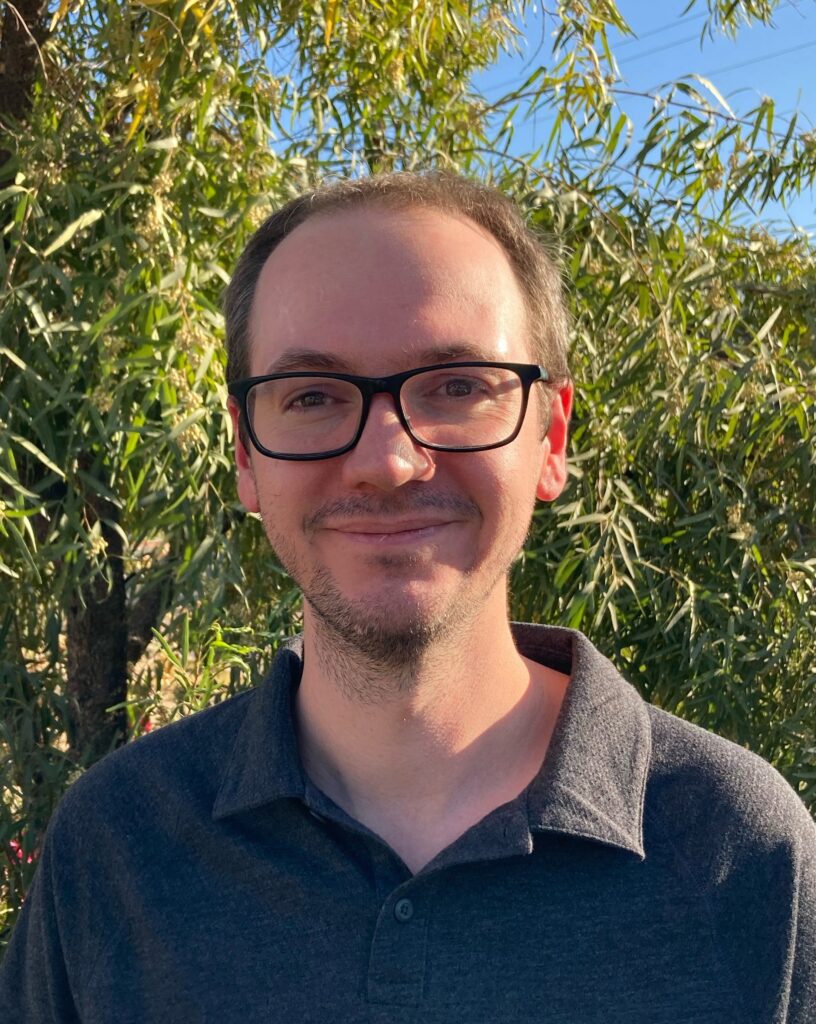
Hannes Bauser
Assistant Professor
Critical Zone Hydrology, Data Assimilation, Machine Learning
Office: LFG 201B
Email: hannes.bauser@unlv.edu
Telephone: (702) 895-2635
Personal Website
ResearchGate
Google Scholar
Education:
Ph.D. Heidelberg University, Germany (2018)
M.Sc. Heidelberg University, Germany (2014)
B.Sc. Heidelberg University, Germany (2011)
Research interests:
My goal is to advance our understanding and quantitative prediction of water flow and transport processes in the critical zone.
The System: Earth’s critical zone is the heterogeneous near surface environment ranging from the top of the canopy to the bottom of the aquifer. The critical zone is governed by a multitude of complex interacting processes sustaining terrestrial life on Earth and it is closely intertwined with human society through issues such as land use and climate change.
Water connects the various components in the critical zone. Water scarcity and water stress already affect regions on every continent and are expected to become even more relevant due to climate change and increasing populations. A quantitative understanding of water flow and transport is fundamental, for example, for sustainable agriculture and the recovery of degraded drylands.
The Challenge: The accurate prediction of water flow and transport in the critical zone on relevant scales ranging from fields and hillslopes to landscapes remains an open challenge. Detailed process understanding is available, however, mainly at much smaller scales.
Applying this small-scale understanding to larger scales is challenging due to a multitude of process interactions, highly nonlinear processes, and an intrinsic multi-scale heterogeneity of terrestrial systems in combination with limited measurement capabilities in the subsurface. In hydrologic models this leads to simplified descriptions, lacking process representations, and unresolved heterogeneous material properties. Therefore, the description of water flow and transport in the critical zone with a forward model typically faces significant uncertainties.
My Approach: I use data science methods such as data assimilation and machine learning to combine process understanding, process based models, and data across different scales to address this challenge. I actively collaborate at a range of scales including (i) the SEPHAS Lysimeters operated by the the Desert Research Institute (DRI) at the patch scale, (ii), the Landscape Evolution Observatory at Biosphere 2 operated by the University of Arizona at the hillslope scale, and (iii) the Southern Nevada Water Authority (SNWA) at the landscape scale.
Selected Publications:
Kim, M., Bauser, H. H., Beven, K., and Troch, P. A. (2023). Time-variability of flow recession dynamics: Application of machine learning and learning from the machine. Water Resources Research, 59, e2022WR032690. https://doi.org/10.1029/2022WR032690
Bauser, H. H., Kim, M., Ng, W.-R., Bugaj, A., and Troch, P. A. (2022). Richards equation at the hillslope scale: Can we resolve the heterogeneity of soil hydraulic material properties? Water Resources Research, 58, e2022WR032294. https://doi.org/10.1029/2022WR032294
Bauser, H. H., Berg, D., and Roth, K. (2021) .Technical note: Sequential ensemble data assimilation in convergent and divergent systems. Hydrology and Earth System Sciences, 25(6), 3319–3329. https://doi.org/10.5194/hess-25-3319-2021
Bauser, H. H., Berg, D., Klein, O., and Roth, K. (2018). Inflation method for ensemble Kalman filter in soil hydrology. Hydrology and Earth System Sciences, 22(9), 4921–4934. https://doi.org/10.5194/hess-22-4921-2018
Bauser, H. H., Jaumann, S., Berg, D., and Roth, K. (2016). EnKF with closed-eye period – towards a consistent aggregation of information in soil hydrology. Hydrology and Earth System Sciences, 20(12), 4999–5014. https://doi.org/10.5194/hess-20-4999-2016